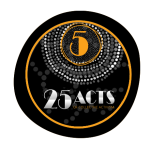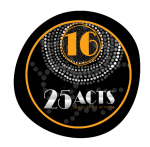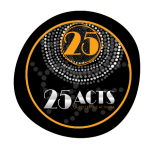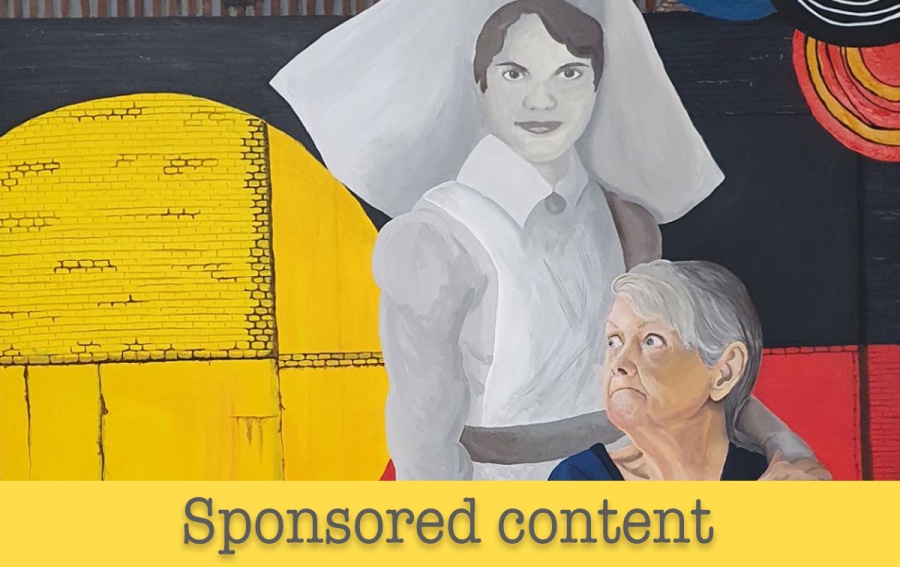This page is produced by Croakey Professional Services, and compiles links and stories from a campaign celebrating the 25-year anniversary of the Congress of Aboriginal and Torres Strait Islander Nurses and Midwives (CATSINaM). It is being updated each week leading up to a gala dinner on Gadigal Country, Sydney, on 20 August, 2022.
Caution: Aboriginal and Torres Strait Islander readers are advised that this page may contain images and details of people who have died.
Campaign launch
On 2 March, the media release below was issued. 
Indigenous nurses and midwives celebrate 25 years of collective activism
The Congress of Aboriginal and Torres Strait Islander Nurses and Midwives (CATSINaM) has launched a campaign to celebrate its 25-year anniversary and its powerful history of collective and individual activism.
CATSINaM will pay tribute to its ancestors, Elders and members over 25 weeks culminating in a national gala dinner on 20 August 2022 with a series of profile stories, films, webinars, social media and special events to mark key dates such as Close The Gap, NAIDOC Week and National Reconciliation Week.
The campaign was launched today in a national online webinar with messages of support from founding members, current members, former and current board members, the nursing and midwifery union and the Commonwealth Chief Nursing and Midwifery Officer, Adjunct Professor Alison McMillan.
CATSINaM Chief Executive Officer Professor Roianne West, a descendant of the Kalkadoon and Djaku-nde peoples, said Indigenous nurses and midwives drew on the strength of the organisation’s founders to face current challenges.
“Our model of Aboriginal and Torres Strait Islander community control that our Elders and ancestors envisaged 25 years ago provides a strong foundation and the words ‘Unity and Strength through Caring’ gifted then have guided us through these turbulent times,” Professor West said.
“Strong Indigenous leadership has helped us navigate some of the profession’s most challenging times – through COVID, bushfires, floods, and Black Lives Matter.
“We are also grateful for the leadership of Aboriginal and Torres Strait Islander nurses and midwives for putting Aboriginal and Torres Strait Islander nursing and midwifery on the national agenda and contributing to national debate and policy on the quality and safety of our health and education systems.”
From the Indigenous nursing pioneers excluded from hospital training because of their Aboriginality, to the nurses and midwives today demanding culturally safe workplaces and practices, Professor West said Aboriginal and Torres Strait Islander nurses and midwives have long been on the frontline of health policy and Indigenous rights, often in the face of racism and discrimination.
Indigenous nurses and midwives are the backbone of the Australian health system and play a pivotal role towards achieving nursing and midwifery workforce and health equity for Aboriginal and Torres Strait Islander communities.
CATSINaM activists to be featured in the 25th anniversary campaign include founder Dr Sally Goold, inaugural patron Dr Lowitja O’Donoghue, Auntie Dulcie Flower, Auntie Jane Jones and Dr Lynore Geia.
From little things big things grow
The forerunner of CATSINaM was the Congress of Aboriginal and Torres Strait Islander Nurses (CATSIN), established in 1997 on Gadigal Country, Sydney, at a national forum attended by 35 Indigenous nurses and incorporated on Gubbi Gubbi Country, Bribie Island, the following year. CATSIN’s founder and first CEO was Wiradjuri academic Dr Sally Goold who at age 17 was the first Aboriginal student nurse at Sydney’s Royal Prince Alfred Hospital and went on to be the first Aboriginal nurse at the Redfern Aboriginal Medical Service in 1972.
After a distinguished career in nursing, university teaching and as a Queensland public health leader, Dr Goold’s Master’s degree investigated why there were so few Aboriginal registered nurses, finding that the major barriers included racism and a lack of support systems. CATSIN was established as a national network of Indigenous nurses and midwives to develop strategies to increase the number of Aboriginal and Torres Strait Islander people in nursing.
In a video message at today’s launch of CATSINaM’s 25th anniversary celebrations, Aunty Sally said before CATSIN was established Indigenous nurses felt isolated and were often subjected to racism.
“From little things big things grow and that’s what happened as far as CATSIN is concerned,” she said.
Aunty Sally urged today’s nurses and midwives to maintain their focus on the value of their careers. “Keep your eye on the prize and a prize it is, it’s wonderful,” she said.
Inaugural chair Ghungalu nurse Aunty Nola White urged current CATSINaM members to “never lose our motto, Unity and Strength through Caring”.
The motto, chosen by the founding members, means: “Unity, us all getting together; the strength would be the strength from each other; and caring because nursing is a caring profession,” Aunty Nola said.
Growing the workforce
CATSINaM today has almost 2,000 members and is a member of the National Aboriginal and Torres Strait Islander Coalition of Peaks. The organisation promotes, supports and advocates for Aboriginal and Torres Strait Islander nurses and midwives in many ways – collaborating with government and universities on nursing and midwifery workforce planning and curriculum, and targeted support, assistance and cultural safety education for university students and practising nurses and midwives. CATSIN changed its name to CATSINaM in 2013 to include midwives and has been a staunch advocate for Birthing on Country models of care.
“Attracting and retaining Indigenous nurses, midwives and university students remains a key issue for CATSINaM, as it was for our founding members,” Professor West said.
In 2021 there were 5,037 nurses and midwives who identified as Aboriginal and/or Torres Strait Islander, accounting for only 1.3% of the nursing and midwifery workforce when Indigenous people comprise 3.3% of the Australian population. Approximately 2,500 Indigenous students at university account for 1.3% of the total nursing and midwifery student cohort.
“There is much work to be done,” Professor West said. “Based on population parity of 3%, we require 5,400 Indigenous registered nurses and midwives in Australia; this is four times the number we currently have.
“We need to make it a national priority to increase our Indigenous nursing and midwifery numbers otherwise we will continue to grapple with inequities in nursing and midwifery workforce and health inequities, given the low Indigenous nursing and midwifery numbers and the disproportionate representation of Indigenous people in the health system.”
Founding member Aunty Lynda Holden said: “CATSINaM was established to increase the number of Indigenous nurses and now midwives, to recognise Indigenous knowledge and address the systematic racism within nursing and midwifery in Australia’s healthcare system that inhibits the privileging of these knowledges. This was and continues to be the purpose of CATSINaM.
“The role of our knowledges in policy, education, training, and practice is absolutely critical.”
Share your stories using the hashtag #CATSINAM25Years
Read CATSINaM’s foundational reports
Read more about racism in nursing and midwifery
For more information contact: 1300 22874626
Week 25 – 1998

Demonstrating excellence in Indigenous governance: Congress of Aboriginal and Torres Strait Islander Nurses and Midwives
The Congress of Aboriginal and Torres Strait Islander Nurses and Midwives (CATSINaM) is well positioned to contribute to improved health, employment and education outcomes for Aboriginal and Torres Strait Islander communities at a pivotal time, according to senior leaders of […]
Read MoreWeek 24 – 1999
Week 23 – 2000
Week 22 – 2001
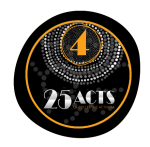
Previewing a “must see” exhibition: In Our Own Right: Black Australian Nurses and Midwives Stories
Introduction: The Congress of Aboriginal and Torres Strait Islander Nurses and Midwives (CATSINaM) is celebrating 25 years of activism and advocacy to improve the nursing and midwifery workforce and health outcomes for First Nations peoples. The celebrations culminate with a […]
Read MoreWeek 21 – 2002
Week 20 – 2003
Week 19 – 2004
Week 18 – 2005
Week 17 – 2006
Week 16 – 2007
Week 15 – 2008
Week 14 – 2009
Week 13 – 2010

ICYMI: a media shocker, COVID callout, climate action, an historic apology, racism and health, and more…
Welcome to a column for those who don’t have time or inclination for Twitter-scrolling. This week, we bring the latest on COVID, report an historic apology, and pay respects to Professor Charles Kerr’s wide-ranging public health legacy. We note that […]
Read MoreWeek 12 – 2011
Week 11 – 2012
Week 10 – 2013
Week 9 – 2014
Week 8 – 2015

A moment of truth: Indigenous nurses and midwives welcome long-awaited apology
Introduction: The Council of Deans of Nursing and Midwifery of Australia and New Zealand has delivered a national apology acknowledging the role of nursing and midwifery in contributing to the harm and ongoing suffering of Aboriginal and Torres Strait Islander […]
Read MoreWeek 7 – 2016
Week 6 – 2017
Week 5 – 2018
Week 4 – 2019
Week 3 – 2020
Week 2 – 2021

A moment of truth: Indigenous nurses and midwives welcome long-awaited apology
Croakey is closed for summer holidays and will resume publishing in the week of 9 January 2023. In the meantime, we are re-publishing some of our top articles from 2022. This article was first published on Tuesday, November 8, 2022. […]
Read MoreWeek 1 – 2022
More CATSINaM 25 Years articles
Please share this new report, celebrating a collective history of Aboriginal and Torres Strait Islander nurses and midwives
Please download, read and share this new report, which compiles a series of articles celebrating the achievements of the Congress of Aboriginal and Torres Strait Islander Nurses and Midwives (CATSINaM), and the organisation’s Elders and members. These sponsored content articles […]
Read MoreA timely celebration of Aboriginal and Torres Strait Islander nurses and midwives in Aboriginal Community Controlled Health Organisations
*** Aboriginal and/or Torres Strait Islander readers are advised this article includes the names of deceased people.*** Introduction by Croakey: The article below was first published in May 2022 as part of a sponsored content series marking the Congress of […]
Read More





